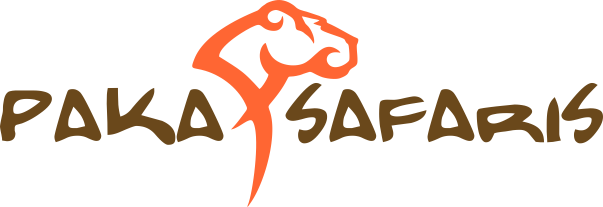Kopjes…
One of the most charming backdrop you can find during your safari to Kenya is kopjes (pronounced ‘kopees’), massive and ancient rocks, which seem to be put there by giants.
The most sensational example is Tsavo West National Park, which is effectively one of the parks with the most suggestive scenographic impact. But you can find these rocks also in Tsavo East, Masai Mara, Meru National Park, etc..
But these rocks should never be merely seen as a photogenic landscape,…. There is more to know about.
19
NOVEMBER 2020
Geology
Habitat
Ancient Rocks




What is a kopje, geologically?
Kopje is a pile of ancient rocks that protrude through the more recent soils and rocks and that’s why they are also called inselbergs, which means “mountain islands”.
They are made either by gneiss, a metamorphic rock originally been formed from granite, or diorite and granite, both coarse-grained igneous rocks.
All kopjes are ancient, belonging to Precambrian, which means over 500 million years old.
All of them originally formed and cooled under the surface of the earth from volcanic activity. Then, over the millions of years, the surrounding softer rocks have eroded, exposing the harder metamorphic and igneous rocks.
We will talk more about kopje formation in another post.


Now, what is the role they play in the savannah ecosystem?
Kopje are a truly unique habitat, with a specialised group of plants and animals. It’s here where we can find klipspringer and hyrax and it is the place to find some bird species like rock-loving cisticola, as the name suggests very well.
With regard to vegetation, rock figs are likewise common here, but almost impossible to see in other places. We can find here also the flame lily, a flower as beautiful as lethal being poisonous to animals and to humans as well.
As well as these specialised species, we can find here many species that are often associated with riverine habitat: figs, tamarind trees and…. Leopard!


Klipspringer (Oreotragus oreotragus)


Rock hyrax (Procavia capensis)


Flame lily (Gloriosa superba)
Why?
Well, in order to give an answer we need to take in consideration the savannah “big four” once again, and how kopjes affect them.
1. Water availability: you might think kopjes are dry barren places, but not at all indeed: rocks are definitely dry, but there are often hollows and cracks within them that keep the water for a long time. In fact, figs are particularly good at sending roots over the rocks to find water and moisture. Mammals and birds know about this too and will use them throughout the dry season. This allows water-dependent species to survive in savannah even when it is completely dry all around.
2. Grazing/browsing: have you ever seen an elephant or a giraffe on top of a kopje? No, never.
Though there is a specialist browsing population, like bush hyrax and klipspringer, the impact of mega-herbivores is minimal on kopjes, allowing plants poorly defended (the plants without thorns) to thrive, contrary to what happens on the plains.




3. Fire: sure, kopjes are fire breaks. In fact large areas of bare rocks can’t burn and plants growing there are safe. As we know fire can be the main process determining the presence of savannah or forest in the wetter areas. Then, it should be no surprise there is a forest type vegetation on kopjes.
4. Nutrients: just as the barren rocks, with their cracks and hollows, allow water to concentrate for long time, so nutrients from animal dung, like hyrax and baboon, leaf litter etc, promote a nutrient high soil, and then thin, for the plants.
Also, there are several animal species that use kopjes at certain times of day or night, to bring their food (and dung) to the kopjes, increasing nutrients levels. One example is leopard that hunt on the plains, but bring its kills to the trees or on the kopjes (or both). Or eagles that nest on the crags but forage over a wide area. This results in a flow of nutrients out of the surrounding plains, on a grand scale.


Here, all of the savannah “big four” are substantially different from the surrounding plains, but mostly fairly close to those in riverine habitat, where Mara river for example or Galana River in Tsavo, flow. So, it’s not surprising that some of the elements are shared between these two different habitats.


Lion couple during their siesta on the rocks (Panthera leo)
So, we have seen how kopjes can be interpreted as a large pump, pulling nutrients out of the plains and concentring them on the rocks, … but there’s another way in which they alter the ecology of the surrounding landscape: predators.
Just as leopards like kopjes, so too do lions.
They’re fantastic places to warm up in the morning or evening sun, and provide an ideal viewpoint to spot prey.
Moreover, the rocks and thicker vegetaion make the ambush much easier.


So kopje is a place to avoid if you are a tasty antelope.
Out on the short grass plains, antilopes have infact a great view and hunt is tough for lions and other predators.
In fact the prides of Masai Mara can have a home range over 200km2, compared to only 15km2 in the wooded savannah.
So if you’re a wildebeest, zebra or buffalo, you’d be wise to avoid the immediate surroundings of kopjes, and removing those grazers from here, of course, will cause a changed ecology of the grasslands there too.
This means that the impact of kopjes spreads out far wider into the landscape than just the rocks themselves.




All is very interesting and, when you will sit down on a kopje, waiting for the sun to set with a drink in your hand, maybe with us, you will see all of this around you.
See you next time…
Sara
Source: safari-ecology.blogspot.com






